
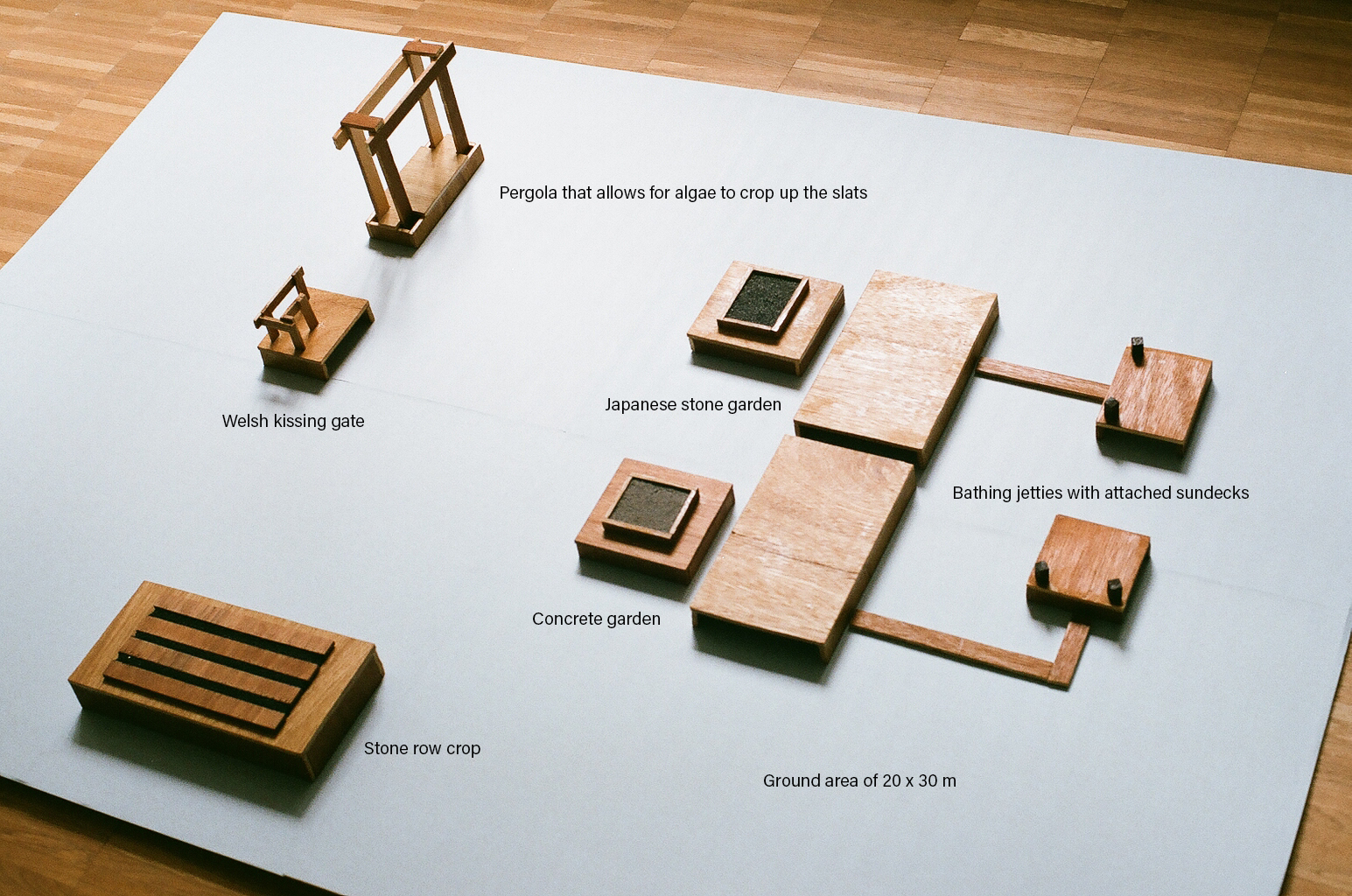
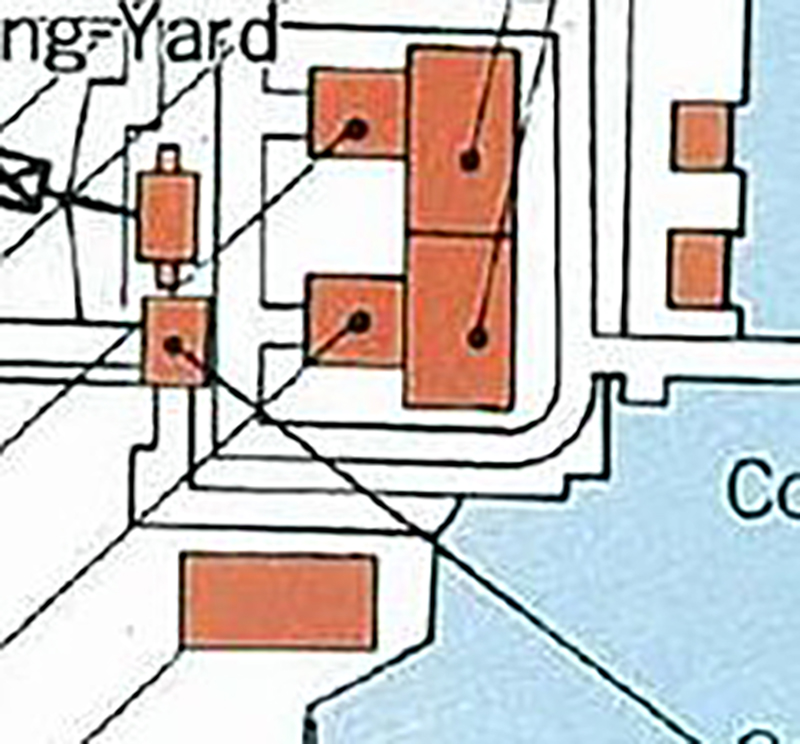
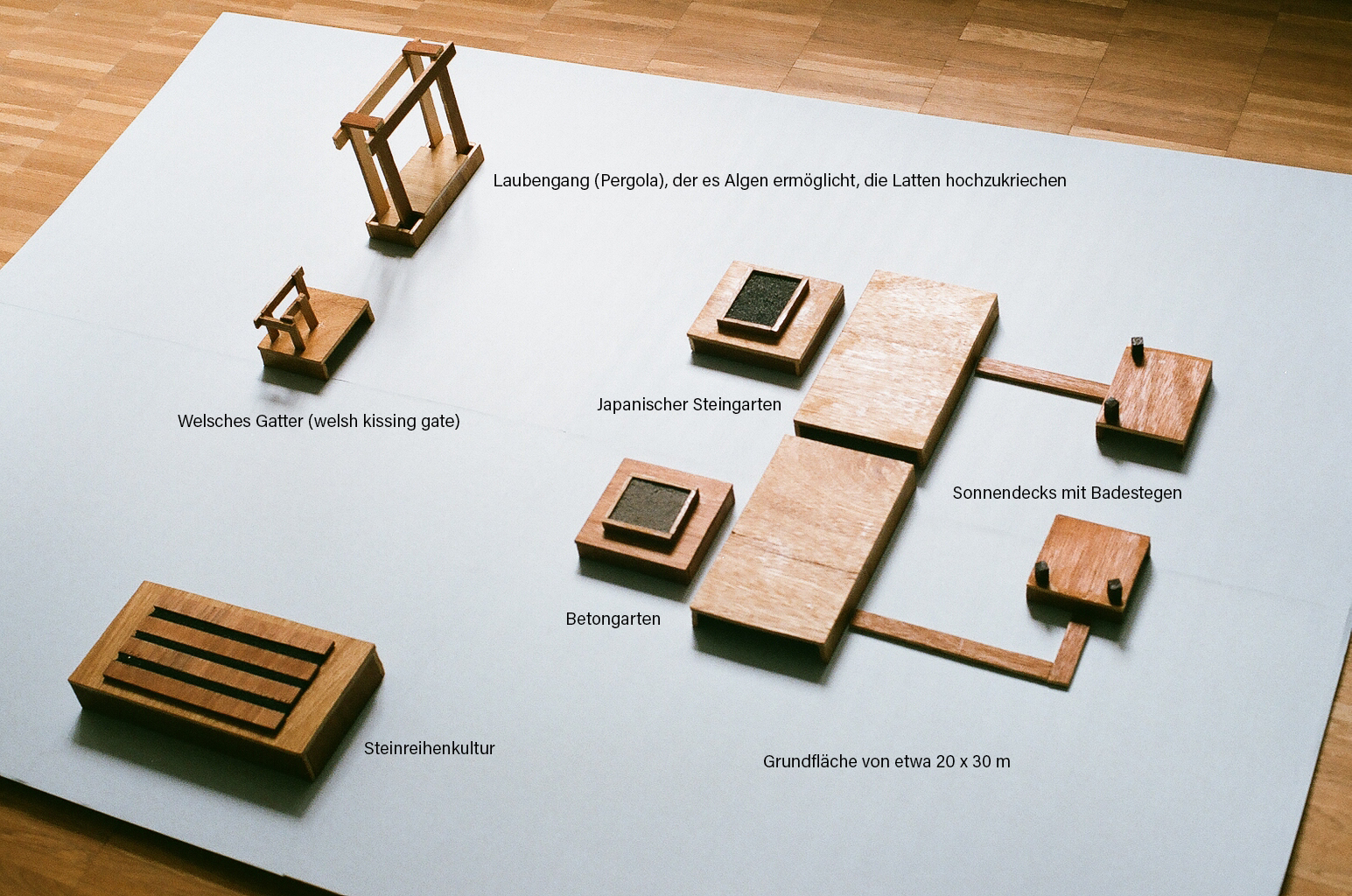
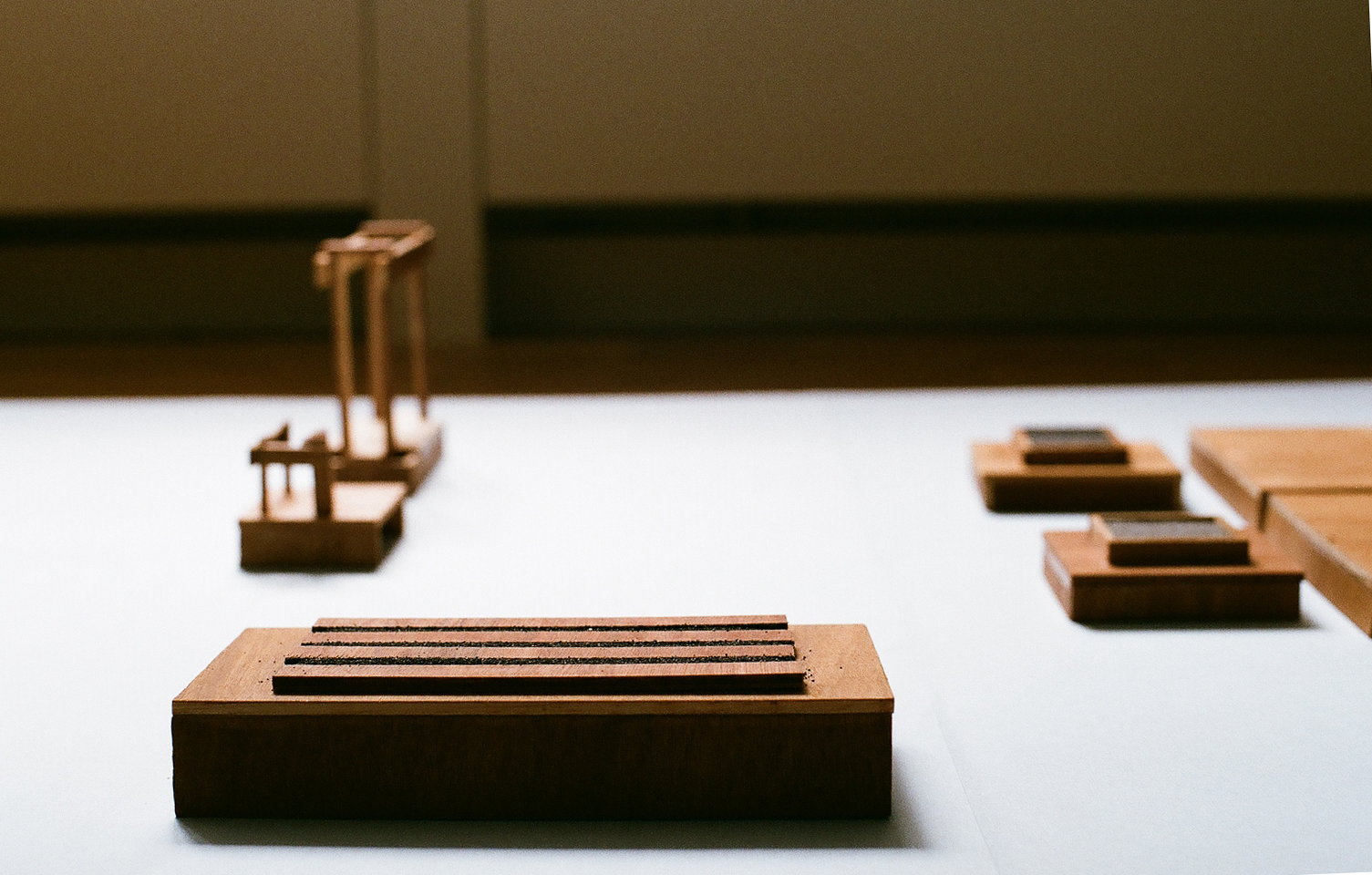

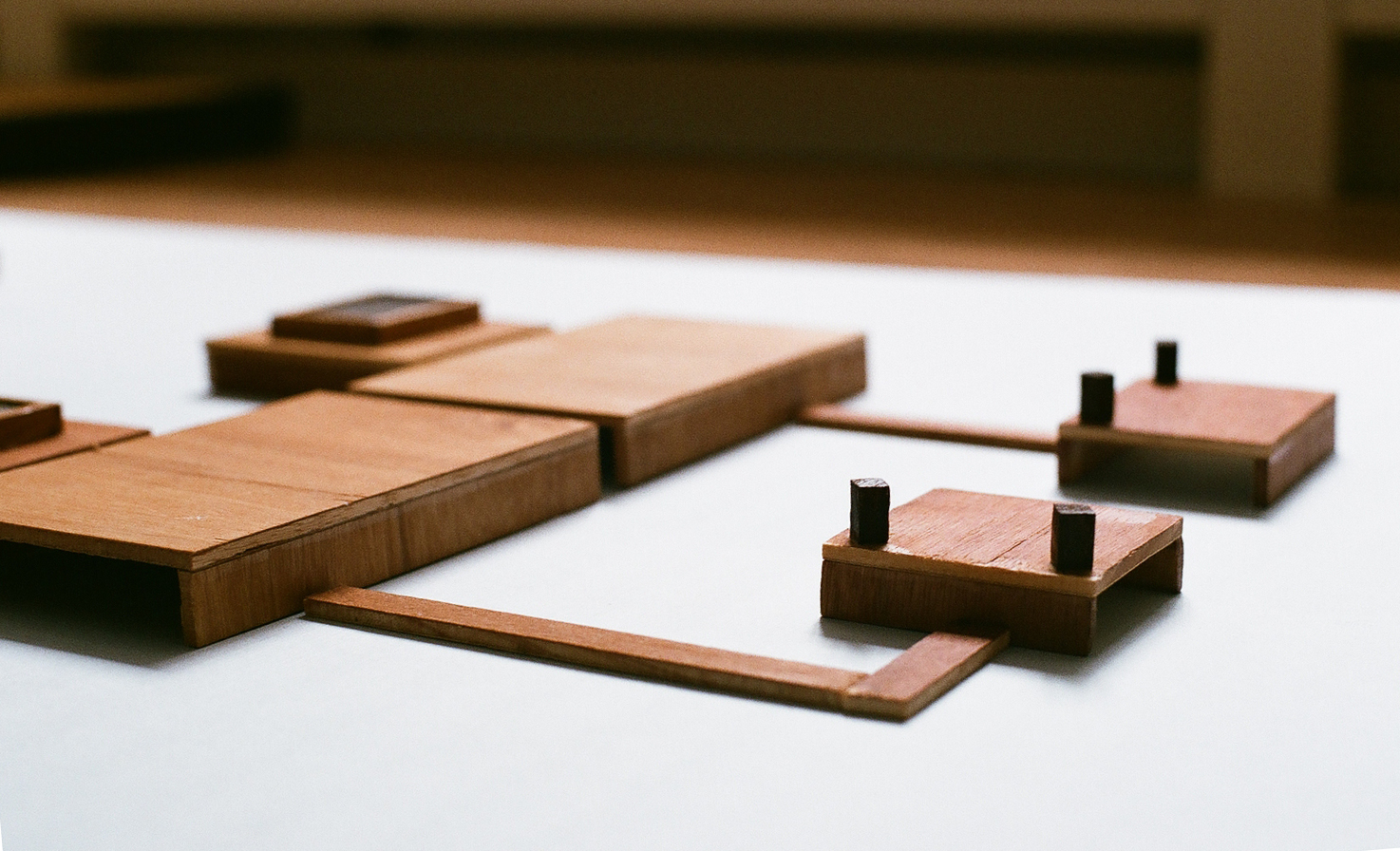




For new development see here.
DEUTSCH
Konzept ursprünglich entwickelt für Setouchi Triennale 2015 (nicht realisiert).
In der gleißenden Sonne lädt das Meer zum Schwimmen ein. Die Steganlage mit ihren unterschiedlichen Gärten ist nicht weit. Man kann den Atem anhalten und versuchen, so lange wie möglich unter den Sonnendecks zu tauchen; auf den Planken zwischen der Reihenkultur balancieren; oder Fange spielen auf dem glitschigen Boden des Laubengangs.
Offshore Garden ist eine temporäre, oder im Wasser schwimmende, Verweilplatz- und Gartenanlage, auf neun Plattformen verteilt. Die Größe und Ausrichtung der Plattformen, die aus Holz gebaut sind, orientiert sich am Grundriss von zweien der vier Kernreaktoren und ihren Nebengebäuden die am 11.03.2011 im Atomkraftwerk Fukushima Daiichi bei dem Tohoku Erdbeben zu Schaden gekommen sind.
Die Anlage ist ein Ruhepunkt für den Körper, aber auch für das menschliche, und das landschaftliche oder städtische Unbewusste, das in der japanischen Shinto-Philosophie einen hohen Stellenwert hat. Jedes Ding, jedes Lebewesen und jede Handlung sind beseelt. Der industrielle Ursprung des Grundrisses, der Grundriss des Atomkraftwerks Fukushima Daiichi, ist hier angefüllt mit Architekturen, deren Ursprünge in unterschiedliche historische, geopolitische und geographische Zusammenhänge verweisen, vom Atomkraftwerk wegführen. Bei der Benutzung des Gartens als Verweilplatz schwingen implizit auch die dramatischen Nachwirkungen der Katastrophe auf die umgesiedelten Bewohner der Region und der Zustand der menschenverlassenen, seit 2011 aufblühenden Landschaft von Fukushima mit, und natürlich das Thema der Energiegewinnung. Japans einst hölzern konstruierte Städte wurden im Laufe der Jahrhunderte wieder und wieder in Feuersbrünsten zerstört. Ein berühmter Schrein wird alle 20 Jahre rituell verbrannt und wieder aufgebaut. Auch die moderne Wohn- und Gebrauchsarchitektur wird in der Regel nur für 30 Jahre gebaut, abgerissen, und dann für die nächste Generation wieder aufgebaut (was mit der alternden Gesellschaft Probleme mit sich bringt). Auch Offshore Garden ist, nicht für die Ewigkeit gedacht, mit simplen Materialien gebaut und könnte mit den Jahreszeiten verwittern, wenn es nach Ablauf des Symposiums nicht abgebaut würde.
ENGLISH
Concept originally developed for Setouchi Triennale 2015 (not realised).
In the gleaming sun the sea looks inviting for a swim. The bathing jetty with its different gardens isn’t far. One can attempt to dive underneath the sundecks and hold their breath for as long as possible; one can balance on the planks and play tag through on the slick floor of the pergola.
Offshore Garden is a temporary, or floating in the water, leisure and garden compound, divided into nine platforms. Size and format of the platforms, that is built from wood and moored near the shore, is based on the floorplan of two of the four power reactors and their annexe of the atomic plant Fukushima Daiichi that were damaged on 03/11/2011 as a result of the Tohoku earth quake.
The arrangement is a point of rest for the body, but also for the human consciousness and that of the landscape, which holds significant value in Japanese philosophy. Every object, every creature and every action are ensouled. The industrial origins of the floorplan, the floorplan of the atomic plant Fukushima Daiichi is here filled up with architectures whose origins lead into different historic, geopolitical and geographic contexts, away from the atomic plant. By using the garden and bathing compound, the dramatic consequences of the catastrophe on the relocated population of the region and the state of the abandoned, blossoming landscape reverb implicitly.
Japan's once wooden structured citys were nearly destroyed by fire hazards throughout the centuries. A famous shrine is ritually burned down every 20 years in a ritual and then built up again from the ground up. Also the modern living and utilization architecture is built to hold up for only about 30 years, gets demolished and rebuilt again for the next generation (which brings up problems for the aging population). Offshore Garden, too, is not made for eternity, built with simple materials and will weather more and more with each passing of the seasons.
Exhibition history
2021 Art for the Elements. Sculpture symposium. District office Treptow-Koepenick. Berlin, DE
